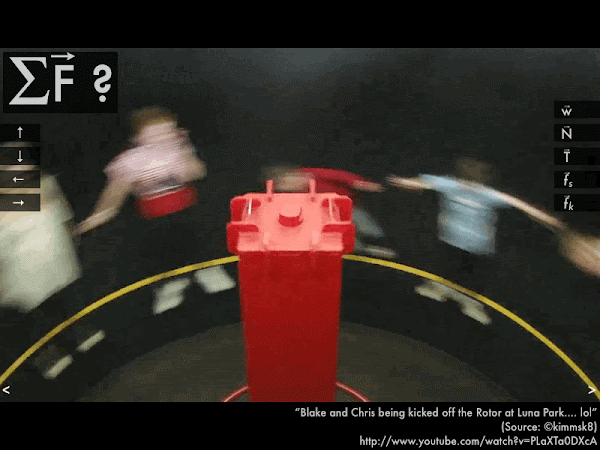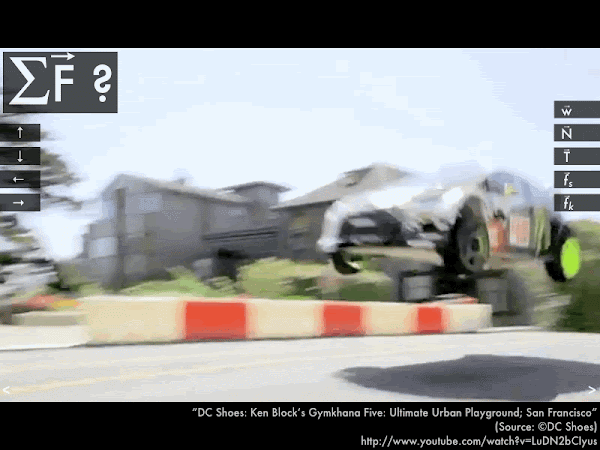Physics 205A Quiz 3, fall semester 2012
Cuesta College, San Luis Obispo, CA
Cf. Giambattista/Richardson/Richardson,
Physics, 2/e, Problem 4.85

A 5.0 kg box on a table is initially stationary, and then pushed with an applied force that is slowly increased from zero to 8.0 N. The coefficient of static friction between the box and table is 0.18. The coefficient of kinetic friction between the box and table is 0.15. After the applied force has reached and is maintained at a constant magnitude of 8.0 N, the speed of the box is:
(A) zero (stationary).
(B) slowing down.
(C) a constant non-zero value.
(D) speeding up.
(E) (Not enough information is given.)
Correct answer (highlight to unhide):
(A)
The box has two vertical forces acting on it:
Weight force of Earth on box (downwards, magnitude w = m·g = 49 N).
Normal force of floor on box (upwards, magnitude N = 49 N).
Because the box is stationary in the vertical direction, these two forces are equal in magnitude and opposite in direction, due to Newton's first law.
The box has two horizontal forces acting on it:
Friction (static or kinetic) force of floor on box (to the left).
External applied force on box (to the right).
The (constant) magnitude of the kinetic friction force is
fk = μ
k·
N = (0.15)(49 N) = 7.4 N. The magnitude of the static friction force can vary anywhere from 0 to a maximum value of
fs,max = μ
s·
N = (0.18)(49 N) = 8.8 N. Because the applied force (increased from 0 to a maximum of 8.0 N) is less than the maximum static friction force magnitude of
fs,max = 8.8 N, the actual magnitude of the static friction force would also be
fs = 8.0 N to oppose the applied force, and the box would still remain stuck to the table.
Sections 70854, 70855
Exam code: quiz03sQr7
(No results available)


































